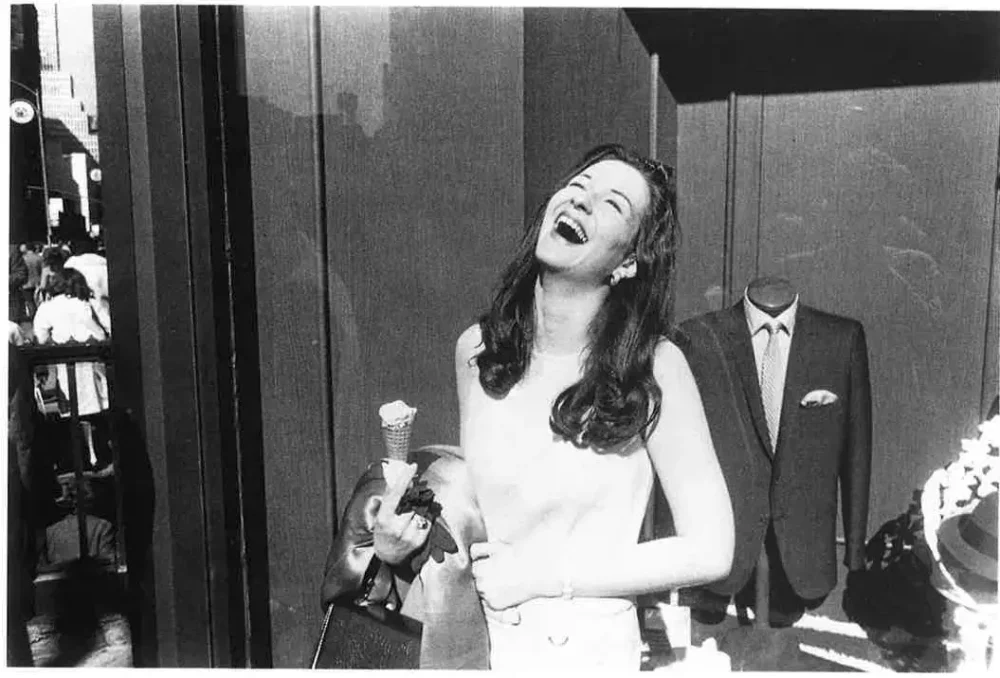Women R Beautiful – Online Exhibition
January 24, 2020 - December 31, 2021
January 24, 2020 - December 31, 2021
Natal-San Miguel expands the world of beautiful women. His portraits of femininity span all body types, ages, skin tones, and definitions. While he still controls the images and the choices, he shares agency. Most of his women know they are subjects; their names and Natal-San Miguel’s detailed captions personalize the personalities emanating from his photographs. Because of this, any sexuality or personification emanating from the subject is just as much a projection from the sitter as an imposition by the photographer.
Negesti is a celebration of African ancestry and power, her powerful hands crossed in front of her bare torso in a gesture of resistance instead of defense. Three Muslim Women, in resplendently patterned robes and headscarves, stand with their hands clasped, their stability mirrored by the elevated steel train tracks in front of them. Similarly, the award-winning journalist Mary C. Curtis emerges statuesque from the autumnal change around her, the organic frisson of her beaded Joyce J. Scott necklace emphasizing the balanced poise of her person.
Natal-San Miguel also expands the definition of woman, including drag and trans beauty in his splayed fan of femininity. Ongina (Dragcon) has a face composed of such painterly construction, it could be an Ingres nymph. In the electrified texture of her tinseled backdrop, her iridescently speared crown, and her glittery tulled top, her smooth, cinnamon skin and placid expression become an island of contrived repose. If it weren’t for the hints of tattoos on her skin, one could mistake her for a statuesque deity. What is undeniable is her spectacular, careful articulation of femininity.
When Natal-San Miguel brought the idea to me of distilling his Women R Beautiful project into an online exhibition, it seemed the perfect way to recognize a number of markers. Of course, there is the critical positioning of his series with the 50th anniversary of Winogrand’s Women Are Beautiful, but it is also the centennial celebration of the 19th amendment, when women achieved the right to vote in the United States. Unplanned, but equally elevating: the online exhibition opens the month that the United States elected Kamala Harris, the first female, African-American, and Asian-American Vice President. But he was less compelled by the historic markers than the personal ones.
It is a difficult anniversary for the photographer: November 2020 marks one year since his beloved mother passed away in Puerto Rico. Also in November 2019, his neighbor, Jennifer Schlecht, a tireless advocate for women’s reproductive health rights at the United Nations Foundation, and her 5-year old daughter were brutally murdered by her abusive husband. In an effort to heal personally and to memorialize the memories of these lost powerful women, Natal-San Miguel assembled the Women R Beautiful portfolio.
Originally opening in March at Postmasters Gallery, New York City, the show was immediately shuttered by COVID. Bringing it to an online platforms ensures many can appreciate the strength and beauty conveyed by his Women R Beautiful images.

About The Artist
Please visit Mint Museum Uptown’s American and Contemporary permanent collection galleries to see Natal-San Miguel’s Mama, 3 Muslim Women, Boxers, and Mary C. Curtis-Journalist, in person beginning January 2021.
Ruben Natal-San Miguel is an architect, fine art photographer, curator, creative director and critic. His stature in the photo world has earned him awards, features in major media, countless exhibitions and collaborations with photo icons such as Magnum photographer Susan Meiselas. Gallery shows include: Asya Geisberg, SoHo Photo, Rush Arts, Finch & Ada, Kris Graves Projects, Fuchs Projects, Whitebox Gallery, Station Independent Projects Gallery and others. His work has been featured in numerous institutions: the New York Public Library, Schomburg Center for Research in Black Culture, Griffin Museum of Photography, Museum of Fine Arts Boston, African American Museum of Philadelphia, The Makeshift Museum in Los Angeles, University of Washington, El Museo Del Barrio and Phillips Auction House. International art fair representation includes: Outsider Art Fair, Scope, Pulse, Art Chicago, Zona Maco, Mexico, Lima Photo, Peru, Photo LA, and Filter Photo Festival in Chicago, IL. His photography has been published in a long list of publications, highlights: New York Magazine, The New York Times, The Huffington Post, Time Out, Aperture, Daily News, Out, American Photo, Artforum, Vice, Musee, Artnet and The New Yorker. In 2016 Natal-San Miguel’s Marcy’s Playground was selected for both the billboard collective and website for Apple. His photographs are in the permanent collection of El Museo Del Barrio (New York City), The Center For Photography (Woodstock, NY), The Mint Museum, The Bronx Museum for the Arts, and The Museum of the City of NY.